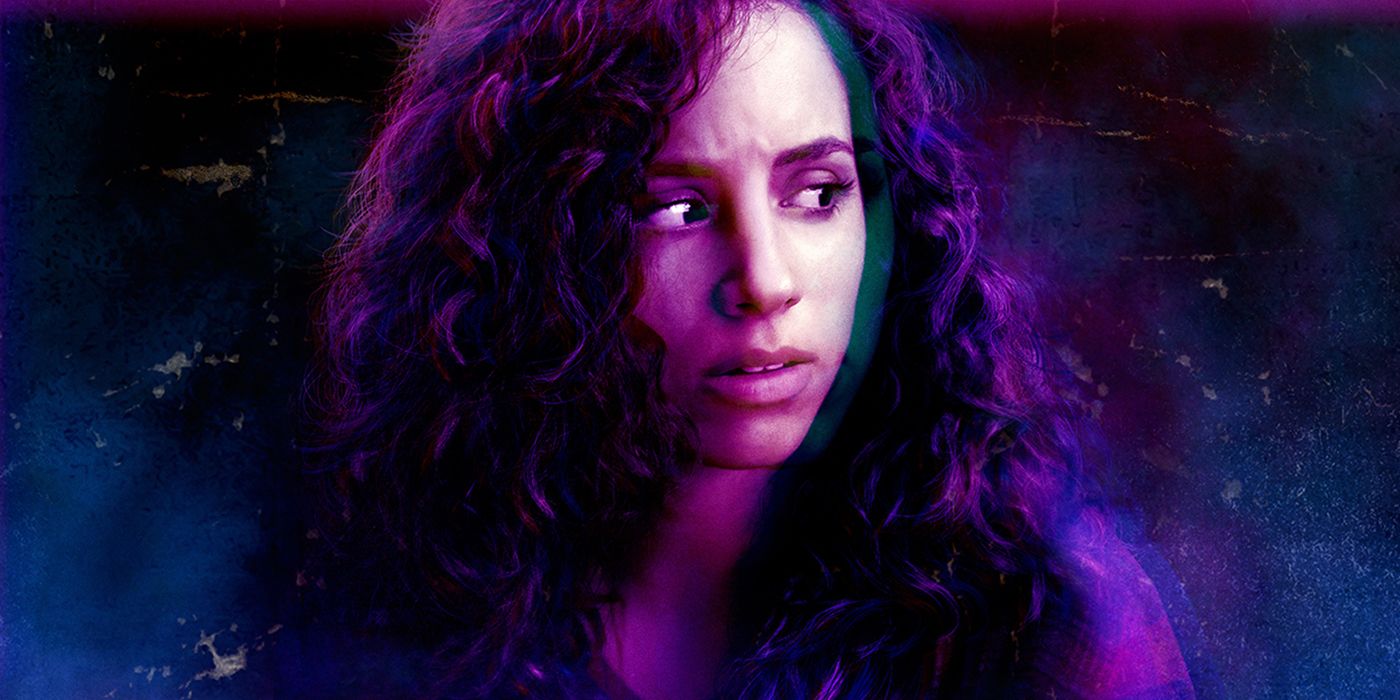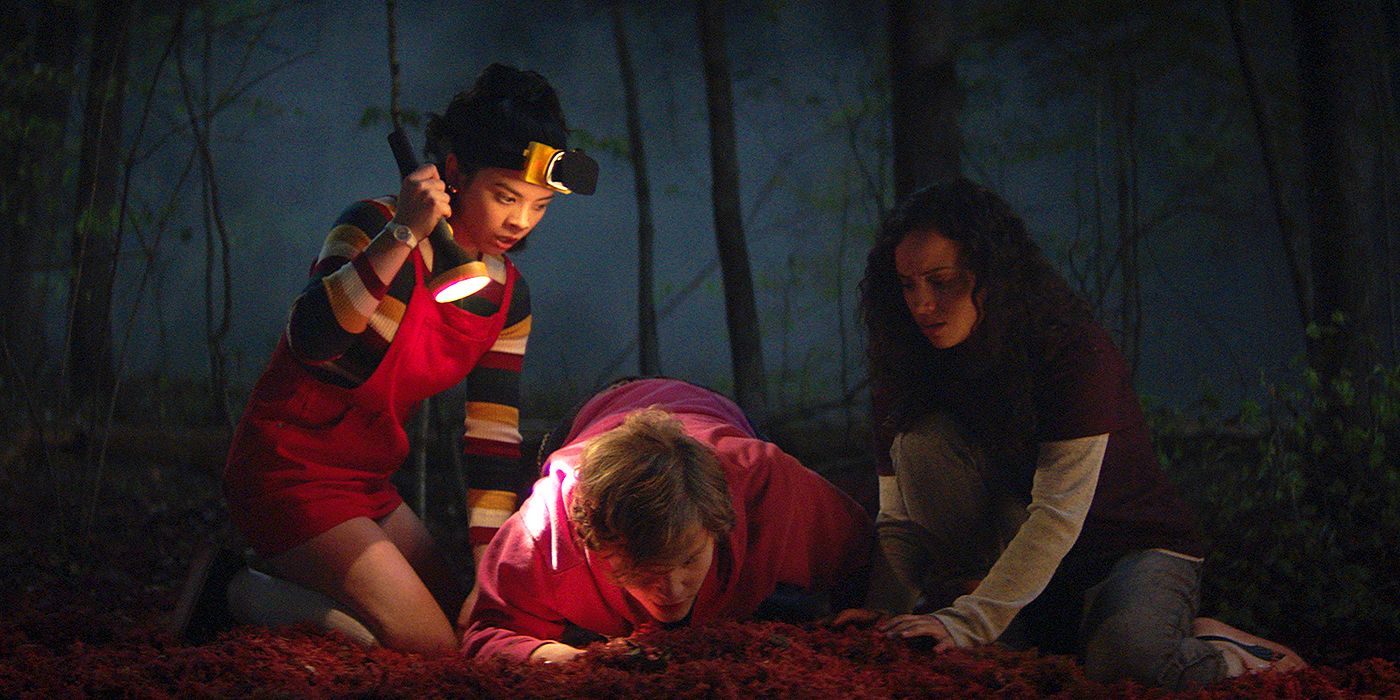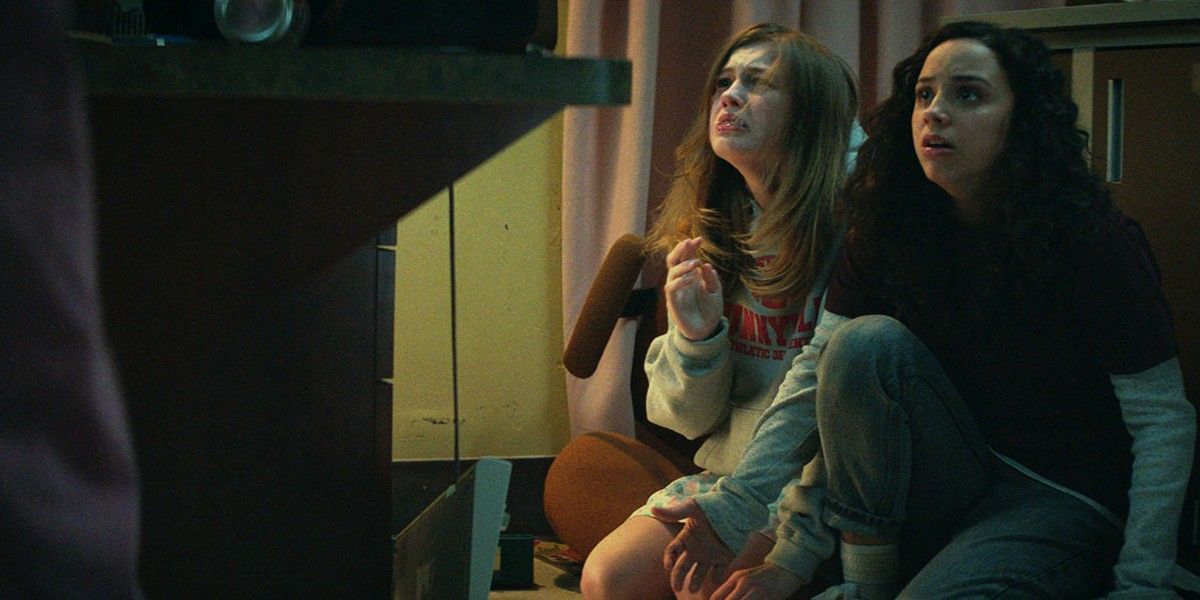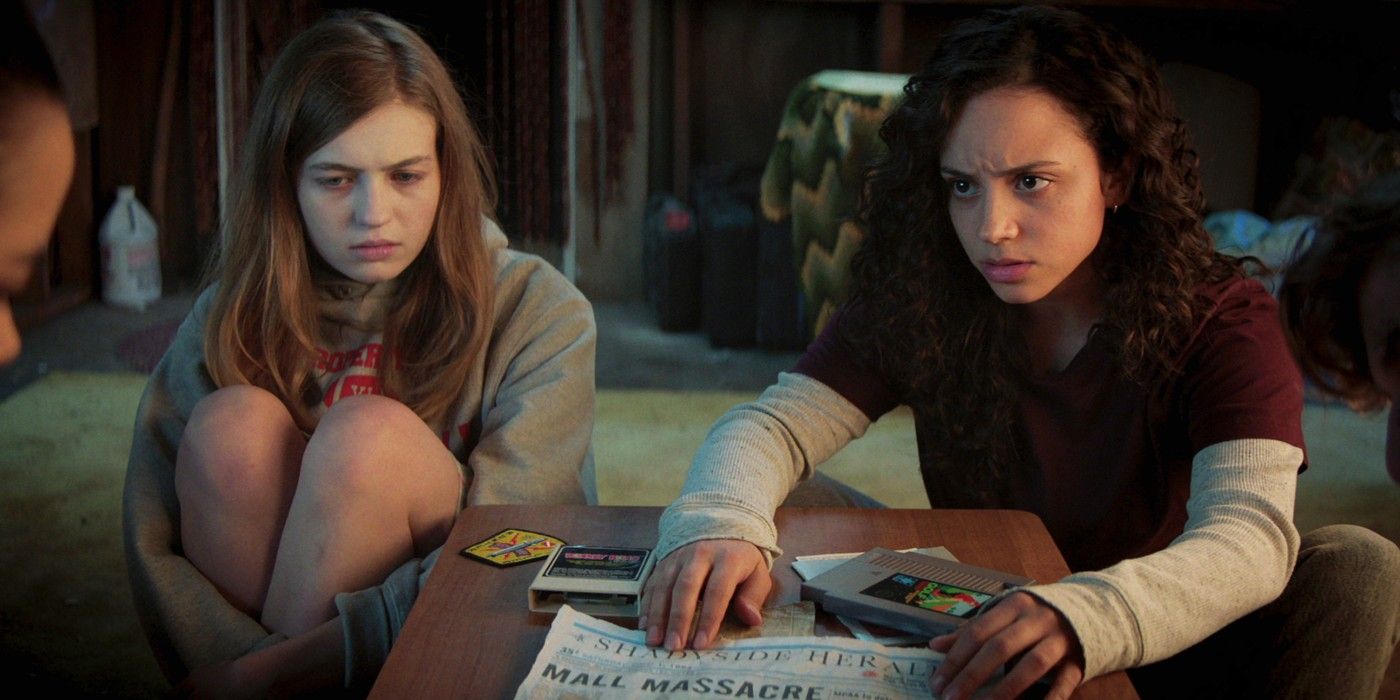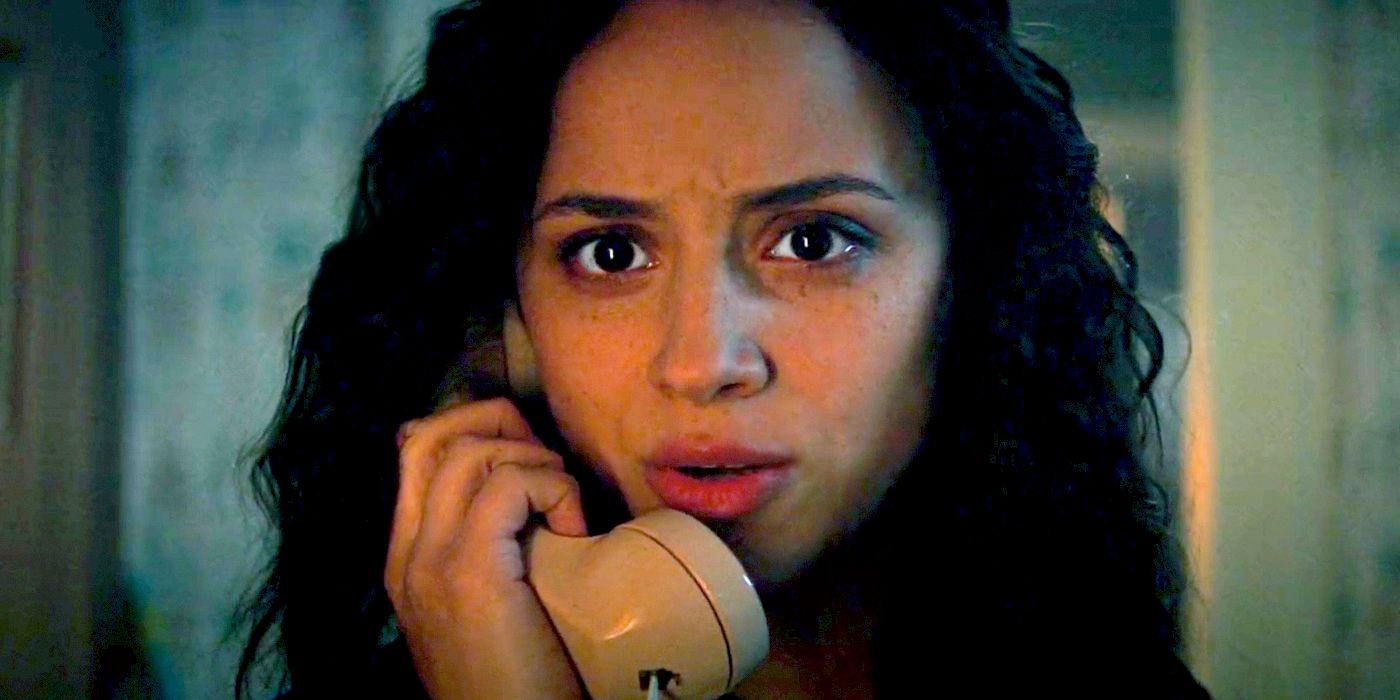WARNING: The following contains spoilers for Fear Street Part 1: 1994, available on Netflix now.
Fear Street: Part One - 1994 kicked off Netflix's "Summer of Fear" campaign. Based on R.L. Stine's novel series of the same name, the first film in the Netflix horror trilogy delivered unique scares while also paying homage to classic 90s horror films and iconic horror properties. Among several memorable characters, Part One introduced its final girl Deena (Kiana Madeira). Deena survives the film's horrors alongside her brother Josh and girlfriend, Sam (Olivia Scott Welch) -- who's unfortunately possessed by Shadyside's Witch, Sarah Fier.
Unlike typical 90s horror leads, Deena is a queer woman of color who saves the day. The film trilogy subverts horror stereotypes and expectations. Its filming and release schedule is also unique. All three movies were filmed back-to-back and are being released on Netflix one week apart. In an exclusive interview with CBR, Madeira discussed what makes Fear Street so groundbreaking, Deena's character and her favorite scene in Part One - 1994.
CBR: What drew you to Fear Street and the role of Deena?
Kiana Madeira: I was drawn to Fear Street for so many reasons. From reading the script on day one, I could tell that this trilogy was going to be so groundbreaking in the way that it subverted stereotypes and characters. Even the rollout of all three films and their attentions to kind of create this binge-watching event for movies I thought was so interesting. And the fact that all three films take place in different time periods. I never read any scripts like that. So I was drawn to the trilogy as a whole.
And then I was drawn to my character, Deena, because she is a true hero. She's an unlikely hero, considering that this is a horror trilogy. So she's a queer character, and a young woman of color, and traditionally in horror films, a character like that wouldn't even make it past the first 15 pages without being killed off. So the fact that she was the protagonist of this trilogy and was a final girl really was so compelling to me. And I'm always so excited to tell stories that are different and are also filled with social commentary, which I think these films do so well. So yeah, I was drawn to the trilogy for so many reasons, but those are probably my top [ones].
I want to talk a little bit about how Deena is a member of the LGBTQ community. Along with her being the protagonist, we see at the heart of the first Fear Street is Deena's romance with Sam. What was it like exploring that with your co-star, Olivia Scott Welch?
Working with Olivia Scott Welch was such a dream. We met in a chemistry read. It was our final audition to get the roles and that chemistry read lasted six hours. There were three actors reading for the role of Deena and three actors reading for the role of Sam. And so we were being mixed and matched for six hours long, and when Olivia and I went in together, we just had this instant chemistry, which you don't often find. And so I feel like that was such a blessing that our chemistry was there since day one.
But at the same time, it takes more than chemistry to feel like you're safe on set. And I think what made us feel really safe to explore our characters was the fact that we were just communicating the whole time. We were always checking in with one another, seeing if there's anything that we need and vice versa. And I think having that open stream of communication really provided a safe space for us to 100 percent dive into the characters and their circumstances. And I hope that's seen on screen because working with her.... I felt very safe to be vulnerable and I think that was really nice.
That's wonderful. You mentioned how Fear Street subverts a lot of stereotypes and expectations. So I was wondering if you can expand on that a bit, since your character, as you mentioned, is a queer woman of color who also comes from my lower-class background, especially compared to people in Sunnyvale? How did all of those subversions of stereotypes play out? What was fun about exploring that?
So I loved telling a story that was based in Shadyside. The Shadysiders feel like their fate has already been determined for them and they are victims of systemic oppression. And I think that is so relatable in the world that we live in. And we don't often see characters like that on screen, who are also the heroes of their own story. Often they're the victims. There are even lines in the script that say, "Poor Shadyside. We're doomed." And it's true. They are and they feel like they've been victims of this curse for over 300 years, but it was so nice to be a part of a story that takes that, and [its] characters really embrace that.
That's what fuels them to embark on this journey to end the curse. And I think it's so metaphoric to the world that we live in today. And I hope that audiences when they watch it can see themselves on screen, and also know that you don't have to feel stuck in the circumstances that you are given. Everyone can be the heroes of their own story. And it's really important to find community and strength within the people around you.
Right, and at least from the first movie, I can definitely confirm that I was feeling that message, which was really refreshing in such a huge horror franchise. Another thing you mentioned that I would love to touch on is -- on top of the story itself subverting these stereotypes -- is the format of these three films, which were very different from most horror franchises. With the back-to-back releases, as well as jumping from decade to decade, what was the biggest challenge for you going from film to film, especially since there are such different time periods?
The biggest challenge? I would say, originally, the biggest challenge for myself, as well as I've heard from my castmates, was the different dialects. We had to speak in a different dialect for 1666. And when we were told that we would need to do that, I think that was the most daunting part of traveling back 300 years. But luckily, we worked with an amazing dialect coach named Charlotte Fleck from the very beginning of starting to film Part One: 1994. We would have a dialect session and coaching on the weekends. Because it was really important for Leigh, our director, to see that these dialects weren't just something that that our characters were putting on, but they were actually a part of the characters that we played in 1666. So I knew how important it was to allow that dialect to be dipped into ourselves as actors. So I think that was probably the most challenging, but then once we learned it, it felt natural, so that was nice.
Other than the dialect, I would say, it was challenging because we shot in Georgia in the summer. It was so hot, so not only were we working really long days, the cast and crew and everyone that was working on this film, we were also dealing with the environmental elements of it being so hot. And as much as it was a challenge, it also allowed us to sit in the heat and allow that to be a part of the narrative as well. So it was kind of a blessing in disguise.
And with you being slated in all three of these Fear Streets, which one was your favorite one to work on and why?
That's always such a tough question. Honestly, I think they're all so fun, especially because we shot them back to back to back. It really felt like we were telling one big, giant story, so the whole experience was really fun. I would say the 1994 portion was so fun because it was the beginning of our journey together as a cast. And I think we all bonded so much over the fact that none of us were teenagers in 1994 in real life. So we were being taken back in time as well. And just exploring the sets -- our set decoration and art department did such a good job at creating such a real 1994 feeling environment. So we were just having a lot of fun with the nostalgia that existed in the 1994 portions.
Speaking of nostalgia, the property Fear Street itself is rather nostalgic for a lot of fans with that and R.L.'s other works. For you, what helped influence your performance? And was this a property that you grew up with?
So Leigh recommended us to watch certain films that were based on that time, so for example Scream, which was made in 1996, which is a couple of years after our film, but I watched Scream and that really helped me see how teenagers were back then. As well as my parents, who were late teens, early 20s, in the '90s. I talked to them a lot about the lack of technology that they had back then which is, I think, the main difference between then and the world that we live in now. We even see in Part One: 1994 where Deena uses her house phone to page Kate, and then she's babysitting and she flicks on the lights on and off and that's how Deena can see where she is. And today we would text each other or FaceTime each other or call each other, and it just wasn't that easy for them back then, which was really fun to dive into.
I grew up reading the Goosebumps books, so I didn't grow up reading Fear Street, but I am familiar with all R.L. Stine's writing and the world that he creates with his writing. And so because of that, I was just really excited to be a part of Fear Street.
Awesome, and with Part One already being out at the time of this interview, what was your favorite scene to tackle and why?
Such a great question. My favorite scene to tackle from Part One: 1994... I would say I really love the grocery store sequence and everything that happens in that sequence. We had so much to do and with the character Kate and the character Simon being killed off in that sequence, the stakes were extremely high. And my character, Deena, is trying to kill Olivia's character, Sam.
And so that original plan doesn't go as intended, so then my character decides to drown her in a lobster tank while the monsters are approaching. And I feel like there's so much intensity, and the stakes are extremely high. So that was really, really, really fun to film. My parents were also there with me on set while we shot the grocery store sequence. It was really nice having them sit behind the monitors and watching the movie magic of it all. That was really nice.
That's awesome. I'm so glad that they got to share that experience with you.
Me too.
Now looking ahead to the next two movies, without getting too much into spoilers, what are you most excited for audiences to experience in the next two installments of Fear Street?
I'm so excited for audiences to experience the plot twists and just so much of the history of Shadyside being revealed. It's been really fun for me to engage online and see people's theories and comments about Part One: 1994. And I just get so excited knowing that there's so much more to come. And what happens in Part One: 1994 is honestly just a precursor to everything that follows in the next two films. So I'm so excited to see people's reactions. There are so many things that I really don't think people will see coming and so I'm very excited about that.
Awesome, and wrapping this up, you mentioned how this is all one connected story, but how does Fear Street Part Two and Part Three differ from Part One? What is the biggest difference you would say, aside from the time setting?
I think the farther back we go in history in Shadyside, the more these characters don't fully grasp the curse that has been haunting them. So in 1994, because it's the most recent out of the three time periods, the Shadysiders have more of an idea of how serious the curse is, because they've seen over the course of the years, just how doomed, for lack of a better word, they've been.
So as we go back to 1978, they do think that they're under a curse, but they don't really know to what extent, and then going back to the origin story in 1666, they really didn't see what was coming. So it's nice to see how these characters are involved in the curse and how, as we go further back in time, these characters are innocent. And I really feel like that allows the audience to create empathy in their hearts for them and really relate to how true the curse is.
Directed and co-written by Leigh Janiak, the Fear Street trilogy stars Sadie Sink, Kiana Madeira, Olivia Welch, Benjamin Flores Jr., Darrell Britt-Gibson, Ashley Zukerman, Fred Hechinger, Julia Rehwald, Jeremy Ford and Gillian Jacobs. Part One: 1994 and Part Two: 1978 are available now on Netflix, followed by Part Three: 1666 on July 16.

